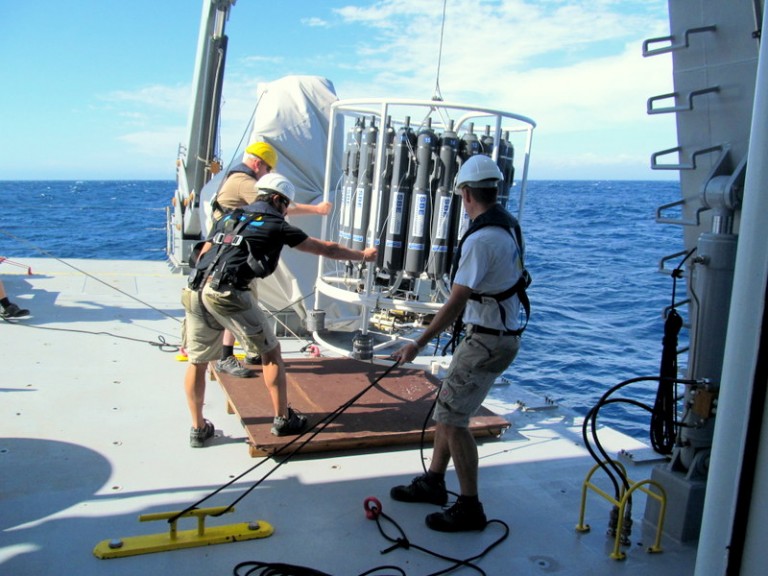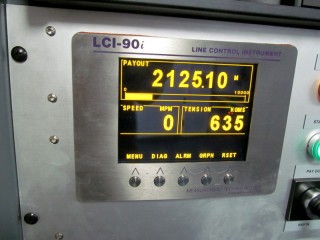
On July 24 and 25, researchers and the crew aboard R/V Falkor cast the Conductivity, Temperature and Pressure Rosette (CTD) to depths of 5,000 and 4,300 meters, respectively. The CTD casts took place about 300 miles east of Nova Scotia in some of the deepest parts of the Atlantic Ocean. R/V Falkor ventured into waters as deep as 5,100 meters on Tuesday. At that depth, the water pressure is 500 times that of atmospheric pressure at sea level.

Once the CTD reached its target depths each day, Falkor crew slowly reeled it in, stopping every few hundred meters to cap off or “fire” one of its water collection bottles, capturing 24 water samples representative of the entire water column. Professors Steven D’Hondt and David Smith of the University of Rhode Island have collected similar water column samples in the Pacific Ocean. Dr. D’Hondt said they aim to identify the populations of microbes that live in each depth layer and seek to find out whether or not similar populations live in the same depth layers throughout the world.
The populations of microbes that live in each depth layer are distinctly different, as each has to contend with different temperatures and amounts of oxygen, light, and nutrients. On both Tuesday and Wednesday, the CTD observed a spike in green fluorescence at 50 meters below the surface, indicating a dense population of oxygen-generating phytoplankton. Phytoplankton are commonly found at that depth because they can collect nutrients that rise from the bottom while still receiving enough light to carry out photosynthesis.
Below a few hundred meters, the CTD observed a sharp decrease in the amount of oxygen in the water. Dr. D’Hondt says the oxygen drop off is partly a result of organic matter decomposing as it slowly sinks to the bottom, and in part because at those depths there is not enough light to support oxygen producing phytoplankton.
If the deep-water microbial communities are notably different here in the Atlantic than those he observed in the Pacific, Dr. D’Hondt and his colleague Dr. David Smith, an oceanographer also aboard the Falkor, may expand their research to include areas like the Indian Ocean and the Antarctic Seas.
“In a broader sense, we’d like to figure out what sort of adaptations the microbes we find have that make them competitive in these widely varying environments,” said Dr. Smith. “Knowing what microbes are there and what their role is helps us quantify their impact on the ocean ecosystem.”
After the scheduled deep water CTD launch on Wednesday, the Falkor turned to a new heading that will take it back to Woods Hole, Massachusetts. Throughout the remaining days of the Falkor’s maiden voyage, researchers aboard will continue to launch the VPRII and collect water samples.
